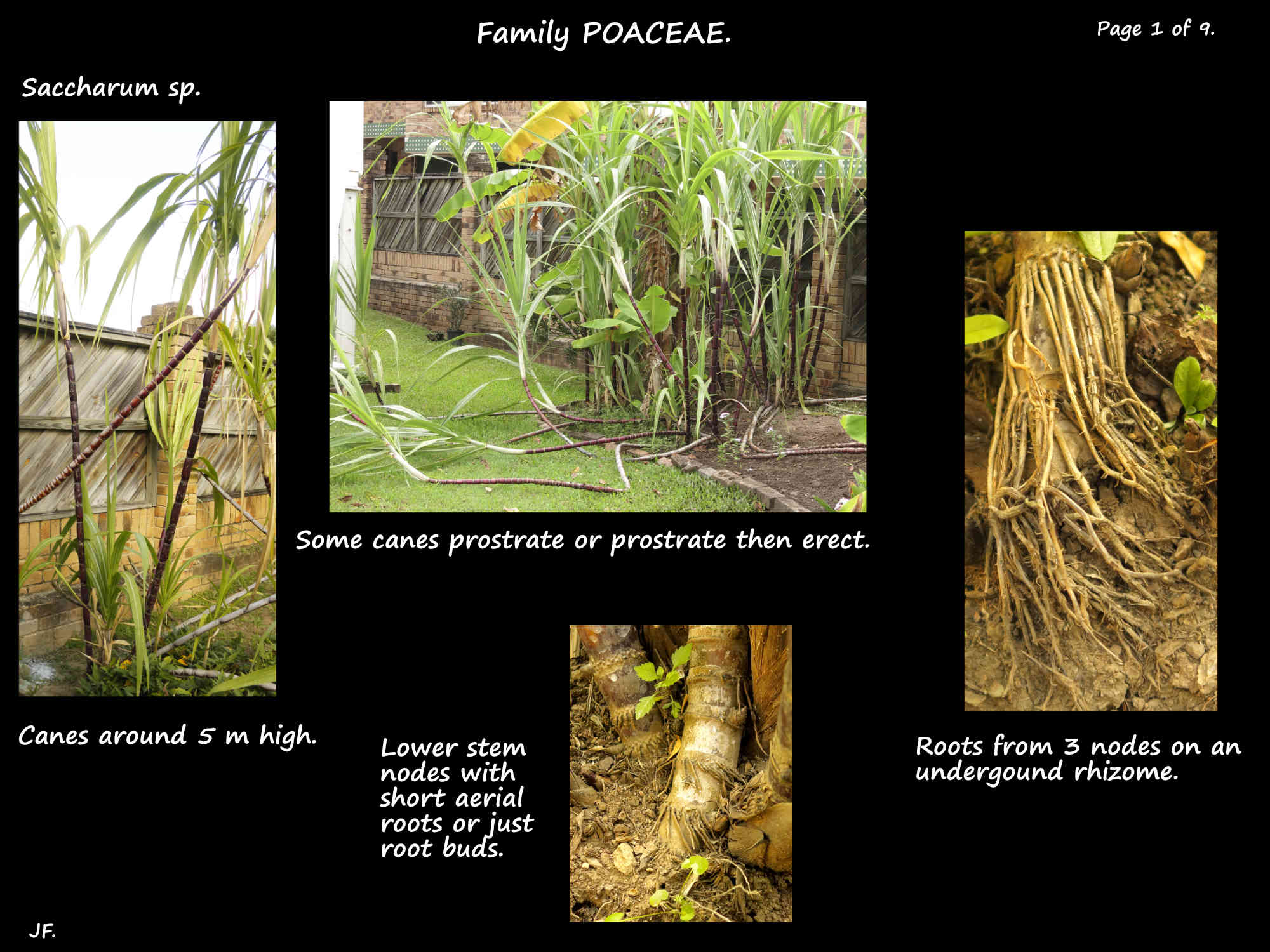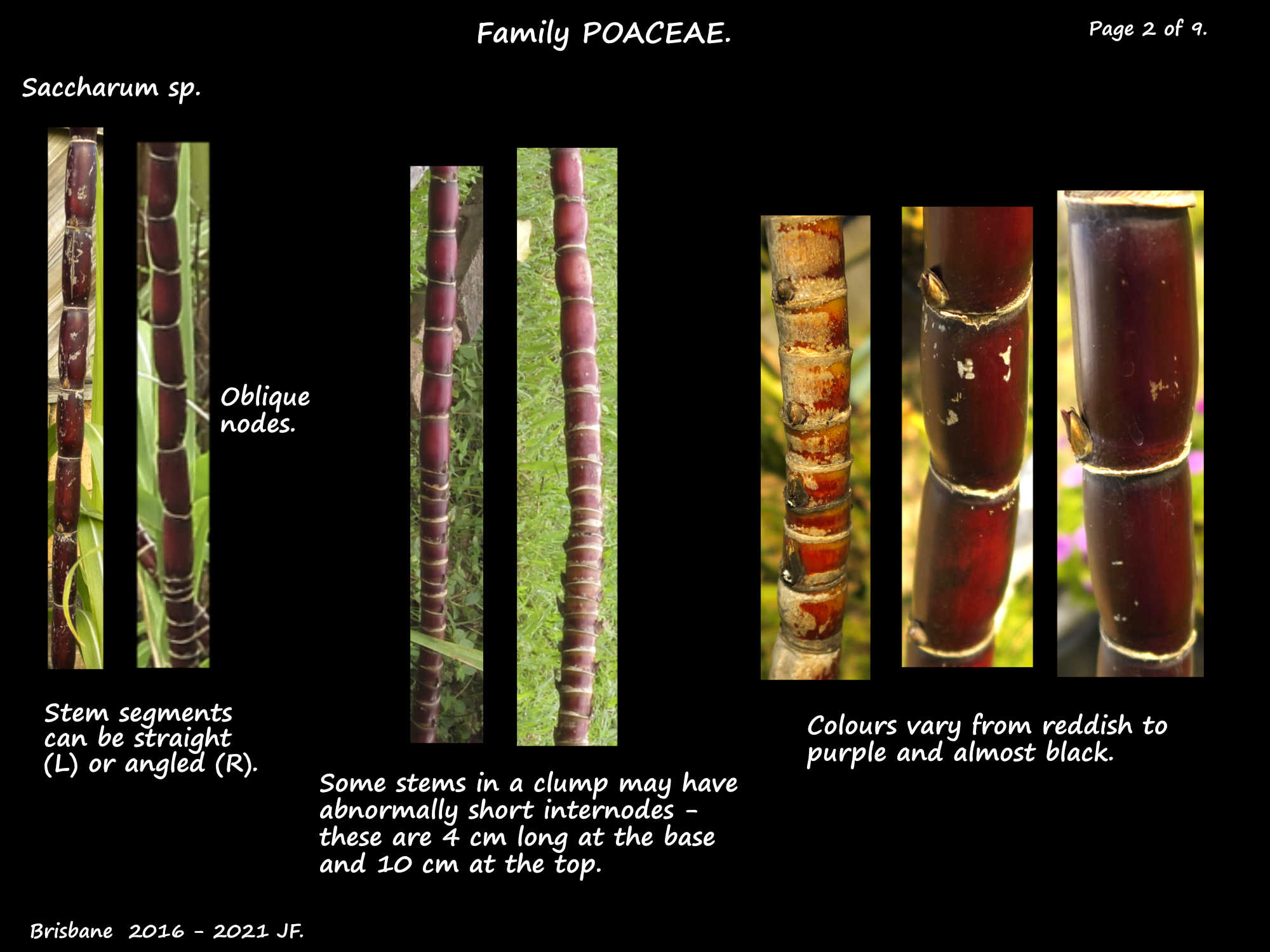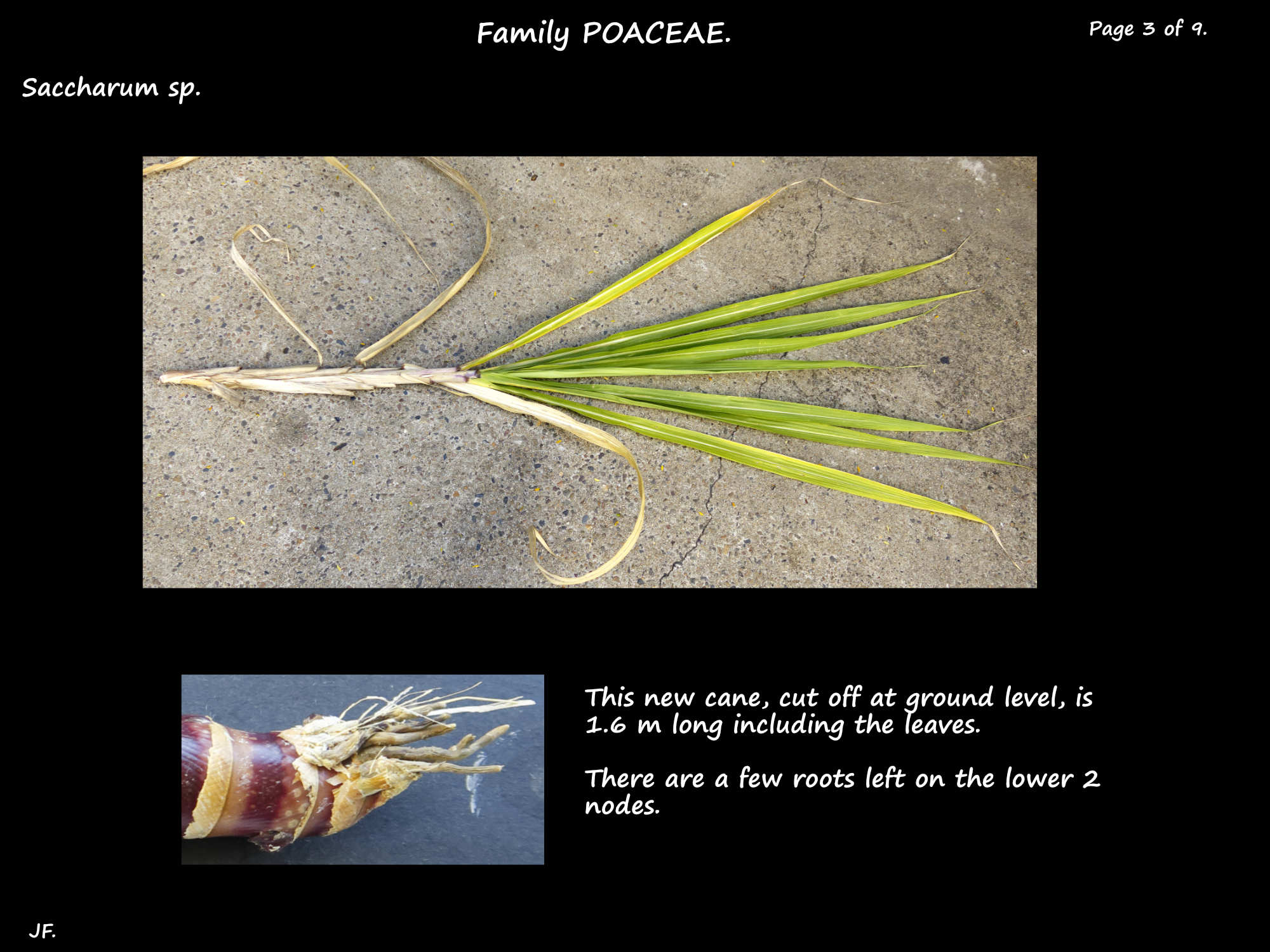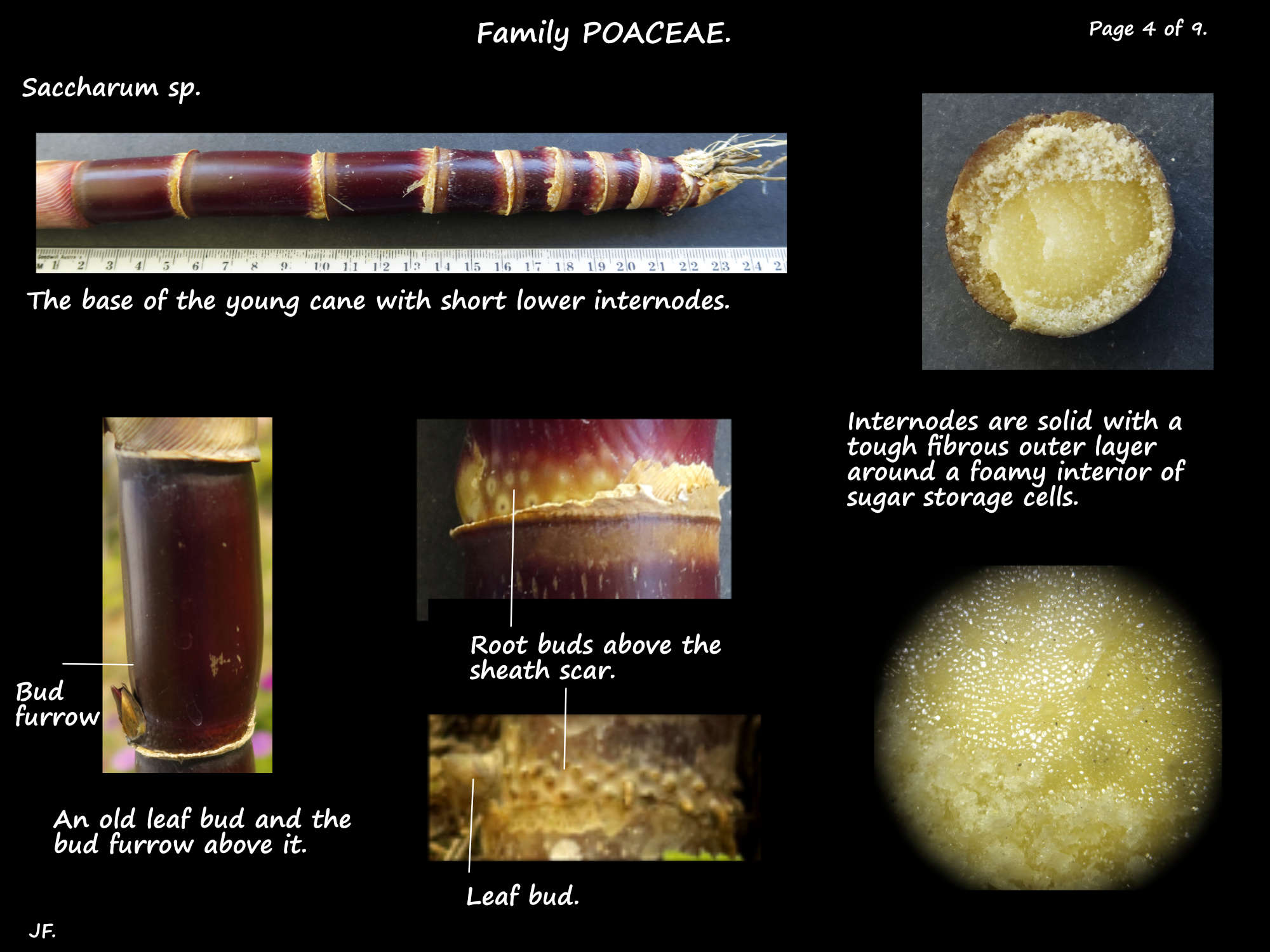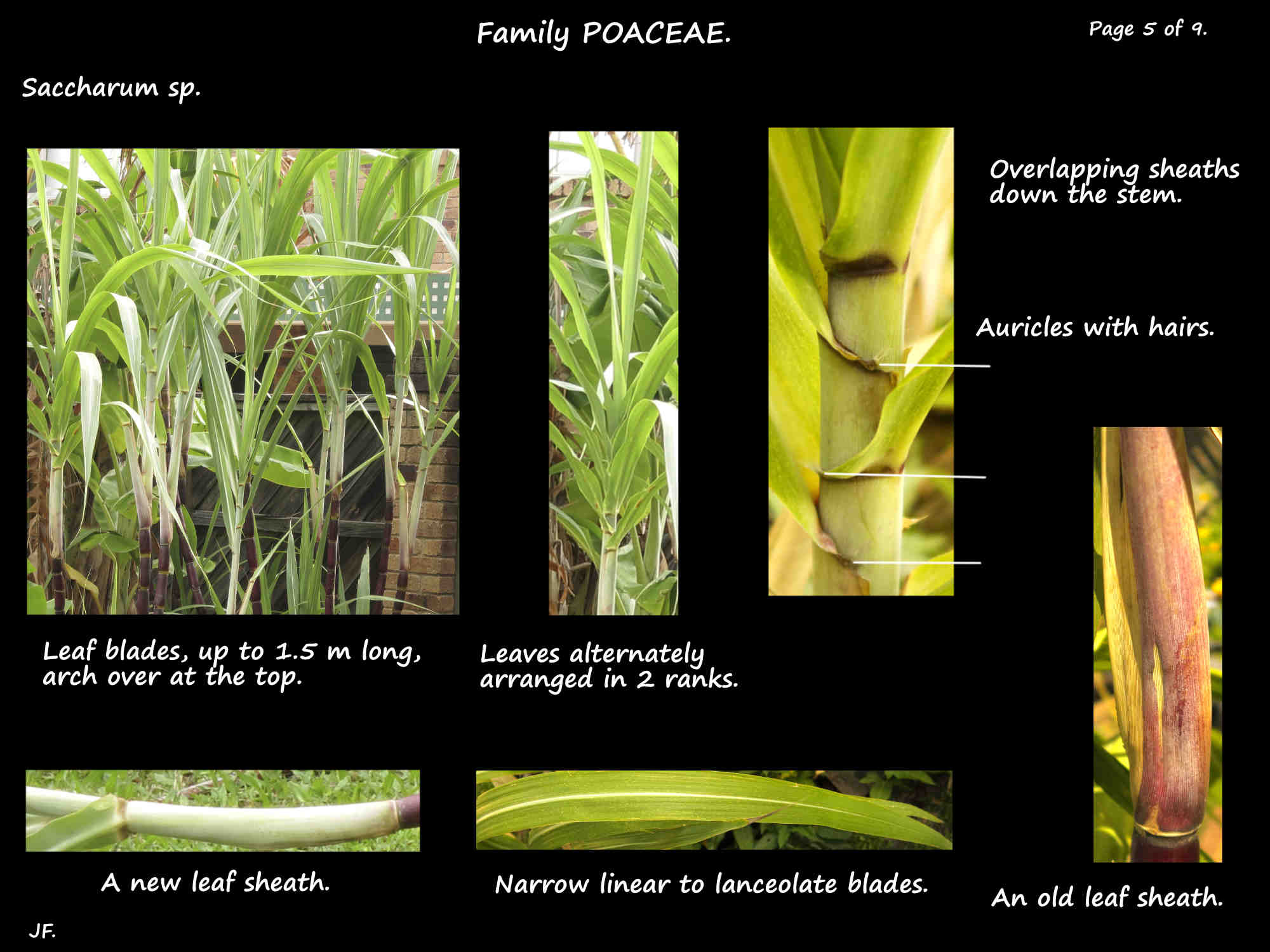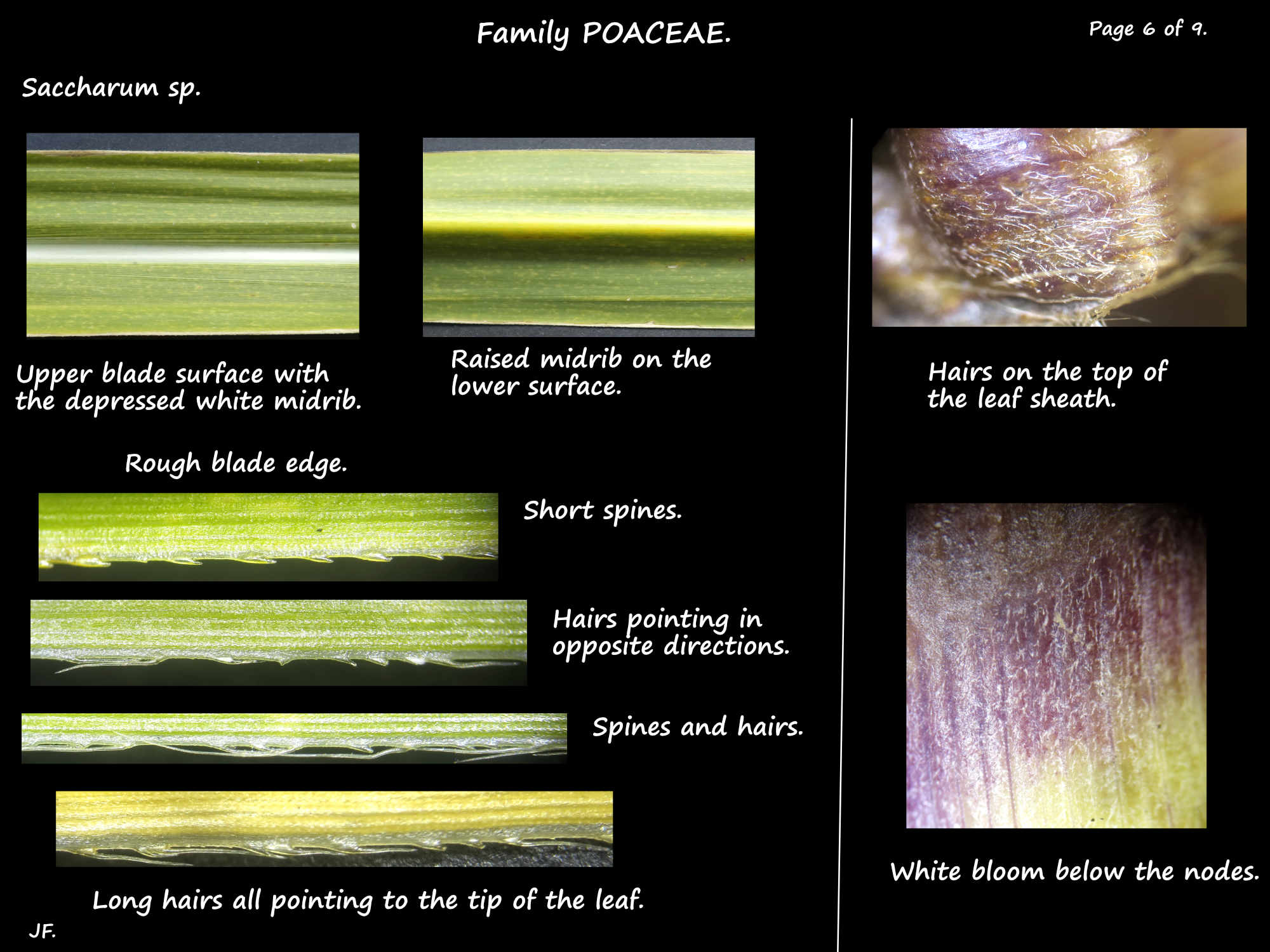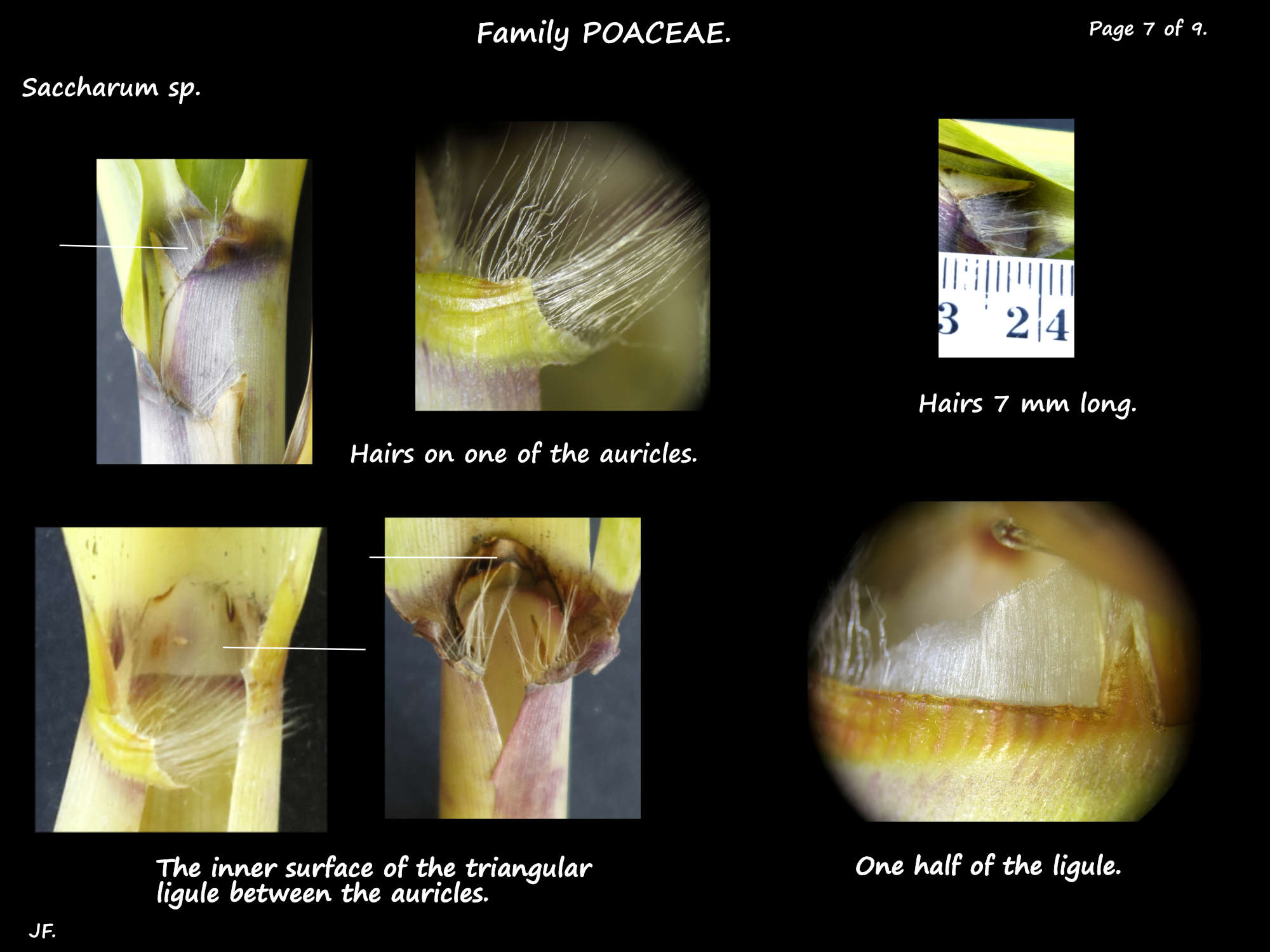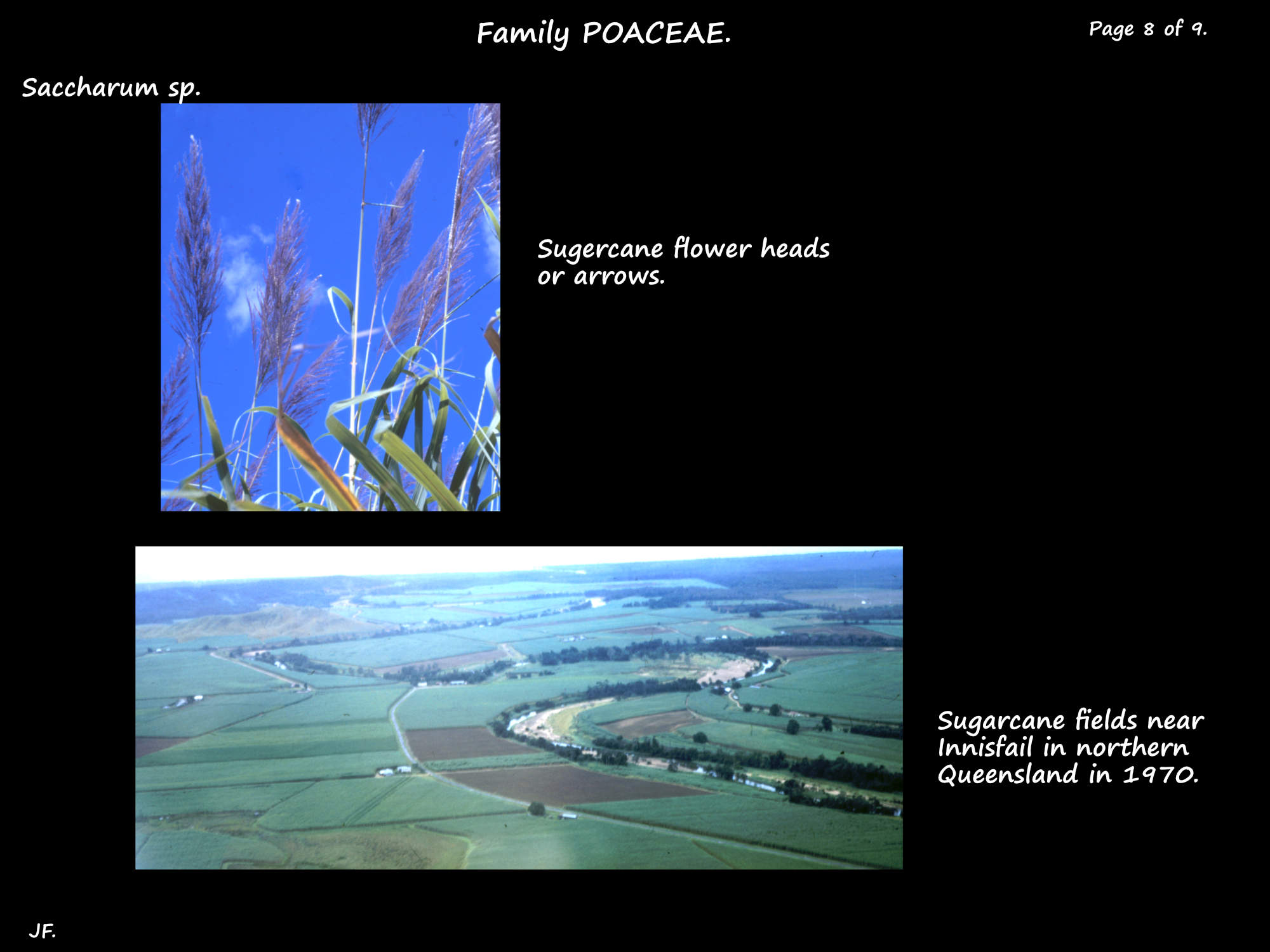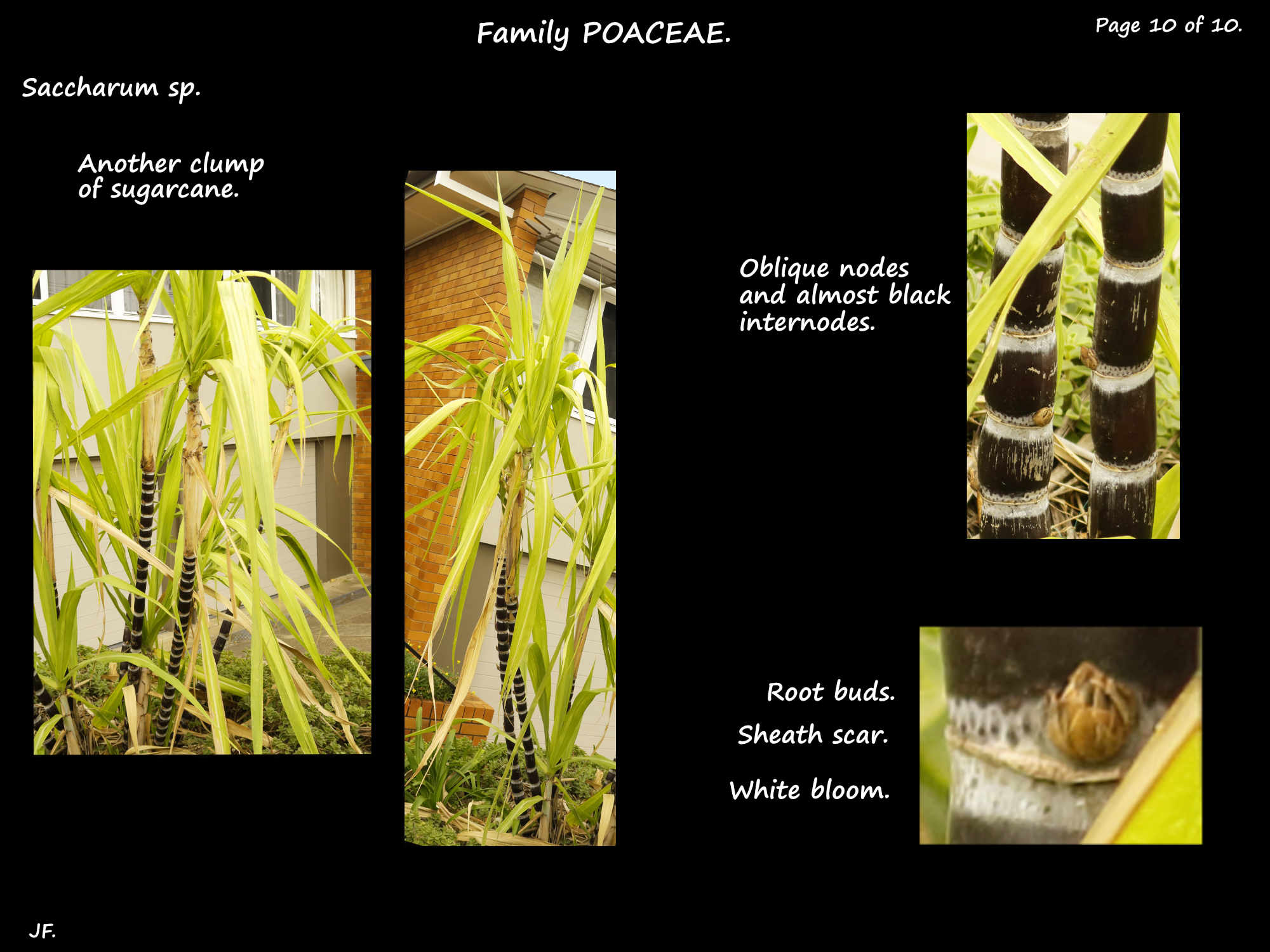Saccharum officinarum.
Family Poaceae > Subfamily Saccharinae.
Saccharin officinarum is a complex hybrid dating back thousands of years possibly derived from Saccharum robustum.
The Saccharum genus may have six species (or up to 36) – S. barberi, S. edule, S. robustum, S. sinense
and S. spontaneum, all of which which can be difficult to separate plus S. officinarum.
Saccharum spp. hybrids used in the commercial production of sugarcane are now mainly derived from crosses
between S. spontaneum and S. officinarum (Saccharum spp.) although other species have also been used.
There are hundreds of cultivars.
Saccharum officinarum is a grass with unbranched segmented stems that look like a bamboo.
Erect stems 2 to 6 m high grow from the underground rhizomes and form tight clumps.
The stems are 2 to 7 cm in diameter and may lean over as they get taller.
The shallow root system is mostly fibrous but it also has buttress roots and others that can grow down several metres.
New shoots from the rhizomes develop nodes that have a growth ring and a root ring with root buds.
Below these are the lateral bud and the ring where the leaf sheath attaches.
The smooth internodes are up to 40 cm long and unlike many Poaceae are solid as this is where the sugar is stored.
They are bobbin-shaped to varying degrees being wider in the middle than the ends.
Some cultivars have one or more canes with short internodes.
Stem colours include red, purple and almost black.
(Other cultivars may have green, yellow or brown stems with pink or yellow streaks.)
Stems have a waxy bloom below the nodes.
They can grow up to 3 m in a season.
There is one leaf at each node and they are arranged alternately in 2 ranks.
The linear blades are up to 1.5 m long and from 2 cm across.
They are a mid-green with a pale midrib on the upper surface and a long tapering pointed tip.
The upper surface is smooth but there are hairs underneath.
The edges are rough with very short firm spikes or longer soft hairs.
There are hairs up to 7 mm long on the leaf base.
The leaf sheath curls around the stem and at its junction with the blade is the ligule.
The ligule is a prominent membrane with hairs.
There are hairs on the sheath.
The branched inflorescences are known as arrows and their shape and size depends on the cultivar.
Ones seen in Queensland are pinkish, feathery and up to 40 or 60 cm long and 20 cm wide.
Along the side branches are pairs of spikelets 3 to 4 cm long.
They are largely hidden by clumps of long pale silky hairs at the base.
Each floret on a spikelet has 2 glumes and 2 florets with a sterile floret below a fertile one.
Fertile florets have a palea, lemma, 2 lodicules and 3 stamens with yellow or purple anthers.
There is a superior ovary with a style and a feathery stigma.
Each arrow can have around 25,000 florets but seeds are rarely set and commercial propagation is by stem cuttings.
J.F.
